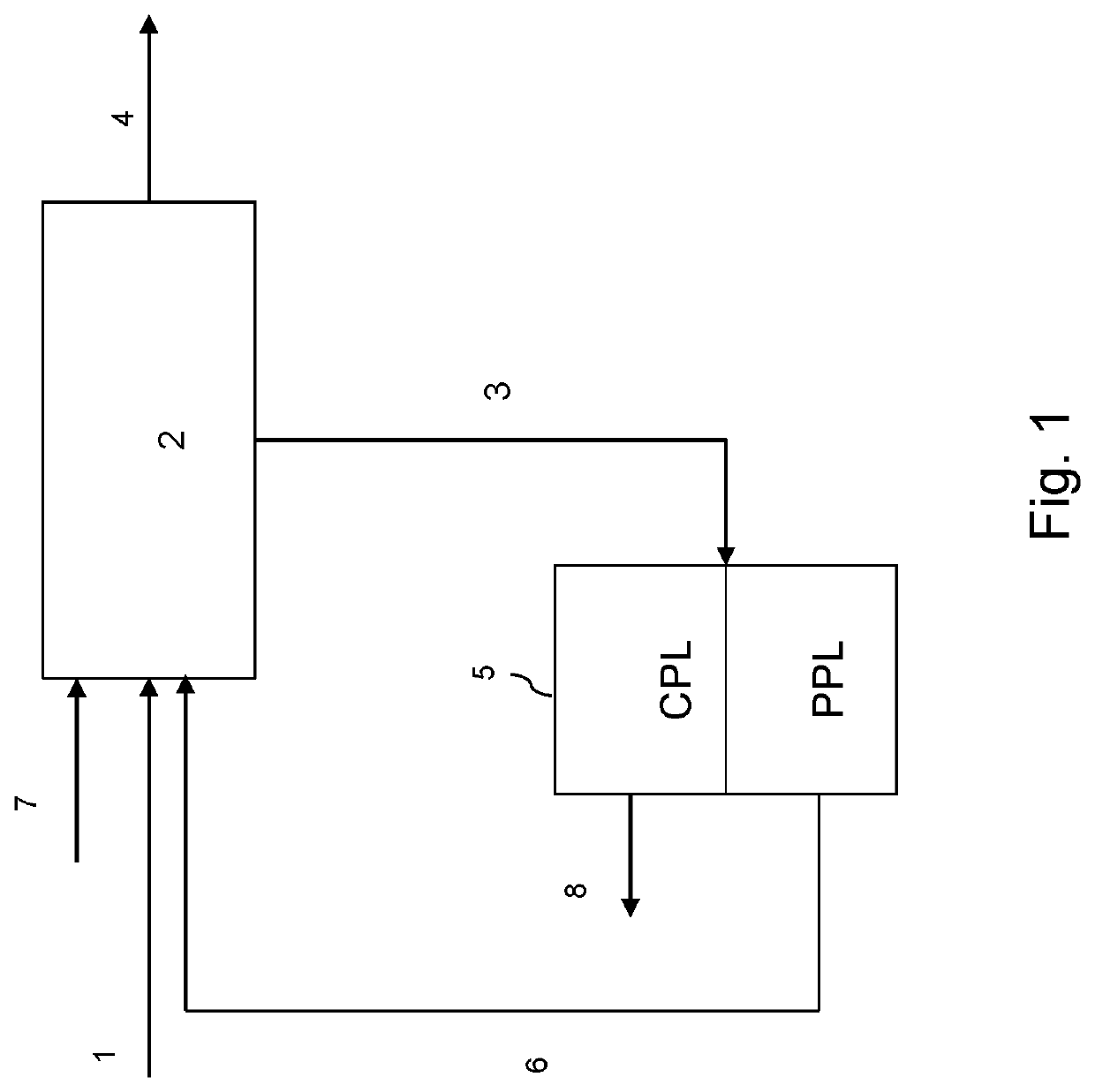Non-corrosive process for cleaning a recyclable material
a recycling material and non-corrosive technology, applied in the direction of cleaning and washing methods, cleaning using liquids, detergent compositions, etc., can solve the problems of environmental unfriendly chemicals, high temperature requirements, energy-intensive processes, etc., and achieve the effect of effective removal of contaminants and highly efficient reuse of cleaned recyclable materials
- Summary
- Abstract
- Description
- Claims
- Application Information
AI Technical Summary
Benefits of technology
Problems solved by technology
Method used
Image
Examples
example 1 (
According to the Invention)
[0060]50 g of spent bleaching clay which contained 46% by weight of a mixture of vegetable oils containing palm oil as the major component was mixed with 25 g of glycerol having a pH value of 7 without any corrosive compounds in a 250 ml glass flask. 25 g of water was then added. In this way a liquid mixture was obtained. After mixing for 60 minutes while heating, a temperature of 65° C. was reached. Using a cotton filter cloth in a funnel, the solid fraction of the spent bleaching clay was separated from the liquid phase. After filtering, the remaining liquid mixture was collected and left to phase-separate for 960 minutes (overnight). In this way two phases were obtained: a top layer (smallest amount, clear layer) and a bottom layer (dark layer, higher viscosity). Both phases were analyzed using IR spectroscopy (Perkin-Elmer Frontier IR spectrometer equipped with a U-ATR accessory). The filter cake was collected too and analyzed using thermogravimetric a...
example 6 (
According to the Invention)
[0065]30 kg of glycerol having a pH value of 7 and without any corrosive compounds was preheated to 70° C. in a RVS pan. Then 30 kg of spent bleaching clay which contained 40% by weight of a mixture of vegetable oils containing palm oil as the main component was mixed with the 30 kg of preheated glycerol. After mixing for 15 minutes, a temperature of 55° C. was reached. Using a membrane pump, the mixture was pumped to a membrane-chamber filter press, equipped with a 2 micron polypropylene filter cloth. After filtering, the liquid was collected and left to phase-separate for 960 minutes (overnight). In this way to phases were obtained: a top layer (smallest amount, clear layer) and a bottom layer (dark layer, higher viscosity). Both phases were analyzed using IR spectroscopy (Perkin-Elmer Frontier IR spectrometer equipped with a U-ATR accessory). The filter cake was collected too and analyzed using thermogravimetric analysis (Perkin-Elmer TGA4000 equipment,...
example 7 (
According to the Invention)
[0066]This example was carried out in the same manner as Example 6, except that the spent bleaching clay contained 45% by weight of the oil.
PUM
| Property | Measurement | Unit |
|---|---|---|
| temperature | aaaaa | aaaaa |
| temperature | aaaaa | aaaaa |
| temperature | aaaaa | aaaaa |
Abstract
Description
Claims
Application Information
 Login to View More
Login to View More - R&D
- Intellectual Property
- Life Sciences
- Materials
- Tech Scout
- Unparalleled Data Quality
- Higher Quality Content
- 60% Fewer Hallucinations
Browse by: Latest US Patents, China's latest patents, Technical Efficacy Thesaurus, Application Domain, Technology Topic, Popular Technical Reports.
© 2025 PatSnap. All rights reserved.Legal|Privacy policy|Modern Slavery Act Transparency Statement|Sitemap|About US| Contact US: help@patsnap.com

